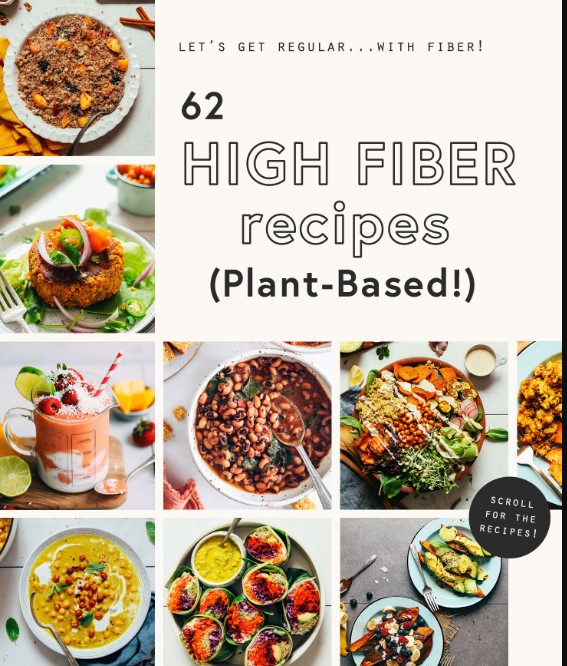BOURSESSENEGAL – When it comes to maintaining a healthy diet, foods high in fiber should be at the top of your list. Fiber plays a crucial role in digestive health, weight management, and overall well-being. In this guide, we will explore the benefits of fiber, the types of fiber, and a variety of delicious foods that are rich in this essential nutrient. Whether you’re looking to improve your gut health or simply want to feel fuller longer, incorporating high-fiber foods into your meals is a smart choice.
What is Fiber and Why is it Important?
Fiber is a type of carbohydrate that the body cannot digest. Unlike other carbohydrates that your body breaks down into sugar, fiber passes through your digestive system relatively intact. There are two main types of fiber: soluble and insoluble.
Soluble Fiber
Soluble fiber dissolves in water to form a gel-like substance. It helps lower blood cholesterol and glucose levels. Foods rich in soluble fiber include:
- Oats
- Barley
- Nuts
- Seeds
- Beans
- Lentils
- Peas
- Some fruits, like apples and oranges
Insoluble Fiber
Insoluble fiber does not dissolve in water. It adds bulk to your stool and helps food pass more quickly through the stomach and intestines. Sources of insoluble fiber include:
- Whole wheat flour
- Wheat bran
- Nuts
- Beans
- Cauliflower
- Green beans
- Potatoes
Both types of fiber are essential for maintaining a healthy digestive system. Eating a diet high in fiber can prevent constipation, promote regular bowel movements, and reduce the risk of developing gastrointestinal disorders.
Health Benefits of High-Fiber Foods
1. Digestive Health
Eating foods high in fiber supports digestive health by promoting regular bowel movements and preventing constipation. Fiber adds bulk to the stool, making it easier to pass. Additionally, it helps maintain a healthy gut microbiome by feeding beneficial bacteria in the gut.
2. Weight Management
High-fiber foods can help with weight management by making you feel fuller for longer. When you consume fiber-rich foods, they expand in your stomach, promoting a sense of fullness. This can reduce overall calorie intake and support weight loss efforts.
3. Heart Health
Soluble fiber can help lower cholesterol levels, which is beneficial for heart health. Foods high in soluble fiber can reduce the absorption of cholesterol into your bloodstream. Incorporating these foods into your diet can help maintain healthy cholesterol levels.
4. Blood Sugar Control
Fiber slows down the absorption of sugar, helping to control blood sugar levels. This is particularly important for individuals with diabetes or those at risk for developing diabetes. Including high-fiber foods in your diet can help manage blood sugar levels effectively.
Delicious Foods High in Fiber
H2: Fruits High in Fiber
Fruits are a tasty way to increase your fiber intake. Here are some fiber-rich fruits to include in your diet:
H3: Raspberries
One cup of raspberries contains about 8 grams of fiber. They are also low in calories and rich in antioxidants.
H3: Pears
A medium pear offers about 5-6 grams of fiber. Enjoy it fresh, sliced in salads, or baked.
H3: Apples
Apples are not only convenient snacks but also provide about 4 grams of fiber per medium fruit. Keep the skin on for maximum fiber.
H2: Vegetables High in Fiber
Vegetables are another excellent source of fiber. Here are some top choices:
H3: Broccoli
One cup of cooked broccoli has around 5 grams of fiber. It’s versatile and can be added to various dishes.
H3: Carrots
A cup of raw carrots contains about 4 grams of fiber. They are great as snacks, salads, or cooked in various recipes.
H3: Artichokes
Artichokes are a fiber powerhouse, with one medium artichoke containing about 7 grams of fiber. They can be steamed, grilled, or baked.
H2: Legumes and Pulses
Legumes are among the highest sources of dietary fiber. Here are some options:
H3: Lentils
Just one cup of cooked lentils provides around 15 grams of fiber. They are perfect for soups, stews, and salads.
H3: Black Beans
A cup of cooked black beans offers about 15 grams of fiber. Use them in tacos, salads, or as a side dish.
H3: Chickpeas
Chickpeas contain approximately 12 grams of fiber per cup. They can be added to salads, made into hummus, or roasted for a crunchy snack.
H2: Whole Grains
Whole grains are another fantastic source of fiber. Incorporate these into your meals:
H3: Oats
Oats are rich in soluble fiber, with a cup of cooked oats containing about 4 grams. They make for a hearty breakfast.
H3: Quinoa
Quinoa provides around 5 grams of fiber per cooked cup. It’s a complete protein and works well as a base for various dishes.
H3: Barley
Barley offers about 6 grams of fiber per cooked cup. It can be used in soups, salads, or as a side dish.
Tips for Incorporating More Fiber into Your Diet
- Start Slowly: If you’re not used to eating a lot of fiber, increase your intake gradually to avoid digestive discomfort.
- Read Labels: Choose whole grain products that list whole grains as the first ingredient.
- Snack Smart: Opt for fruits, nuts, and raw vegetables as snacks instead of processed foods.
- Experiment: Try new recipes that incorporate high-fiber foods. Explore different cuisines that use legumes, whole grains, and vegetables.
- Stay Hydrated: Drinking plenty of water helps fiber do its job effectively.
Conclusion
Incorporating foods high in fiber into your diet can significantly improve your health and well-being. With so many delicious options available, it’s easy to add fiber to every meal. By focusing on fruits, vegetables, legumes, and whole grains, you’ll support digestive health, manage your weight, and enjoy a host of other health benefits. Start your journey to a healthier diet today by choosing high-fiber foods!
REFERENCE : https://www.cdcfoundation.org/



